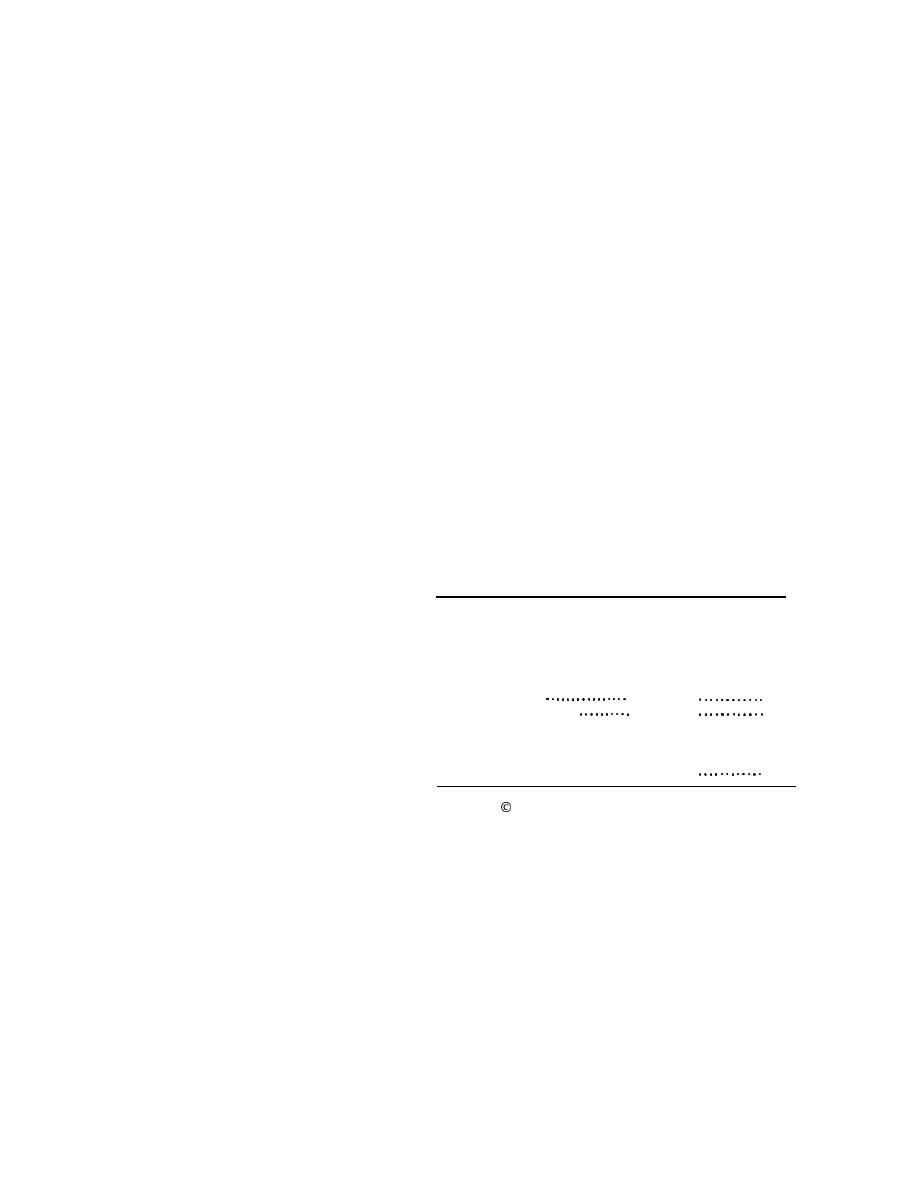

Custom Search
|
|

|
||
 TM 5-684/NAVFAC MO-200/AFJMAN 32-1082
Improperly ventilated housings on such installa-
135 percent maximum permissible rated kilovars
tions may result in excessive operating tempera-
has not been exceeded. Since operation in excess of
tures.
voltage and temperature limits may shorten the life
of a capacitor, the voltage should be checked periodi-
13-8. Temperature influence on power ca-
cally to ensure that it is within design limitations.
pacitors.
Modern power capacitors are designed for operation
13-11. Fuses for power capacitors.
at a maximum ambient temperature as given in
A capacitor fuse is not used for overload protection
table 13-1 (which occurs at rated voltage and fre-
in the same manner as a fuse is used for overload
quency and while subjected to the direct rays of the
protection of other electric apparatus. The current
sun). Conditions resulting higher operating tem-
rating has to allow for inrush current, and capacitor
peratures may injure the insulation and should be
fuse ratings typically range from 165 to 250 percent
avoided. Capacitors are designed for continuous op-
of the capacitor current rating. Fuse ratings should
eration at a maximum ambient temperature of 40
always be those recommended by the manufacturer,
degrees C. Capacitors that are normally deener-
since the fuse's time-current characteristic must be
gized, or operate intermittently at or below an am-
matched to the capacitor's tank-rupture time-
bient temperature of minus 20 degrees C, should be
current characteristic. The blowing of a properly-
carefully inspected. At extremely low temperatures
rated fuse may indicate a capacitor fault, as well as
liquid insulation can crystallize which decreases in-
a circuit overcurrent operating condition. When in-
sulation strength and failure may occur when the
spection reveals blown fuses, do not replace such
capacitor is re-energized. For installations where
fuses until a check determines that the capacitor
low temperature is a problem, units should be kept
unit is still serviceable. When fuses are replaced, be
energized.
sure they are of proper voltage and current ratings
13-9. Exposure influence on power capaci-
and in compliance with the capacitor manufactur-
tors.
er's recommendations.
Care should be taken to eliminate or minimize ex-
Table 13-1. Maximum ambient temperatures for continuous
posure of capacitors to damaging fumes or vapors,
operation1,2
salt air, unusual dampness, contamination, abnor-
mal shock, or vibration. Corroded or rusted capaci-
Ambient air temperature
in degrees C
tor cases and mountings should be cleaned and
painted. Capacitor bushings and busbar supports,
24 hour
subject to accumulation of dust or foreign materials,
aver-
Normal
Mounting arrangement
annual 4
should be cleaned periodically. The intervals will
Isolated capacitor
46
35
depend on the severity of the condition.
Single row of capacitors
40
25
Multiple rows and tiers of capaci-
13-10. Voltage influence on power capaci-
tors.............................
35
. . . . . . . . . ...20
tors.
Metal enclosed or housed equip-
ments...........................
35
20
Shunt capacitors cause a voltage rise at the point
where they are located and are likely to operate at
`Copyright 1993 IEEE, all rights reserved.
overvoltages. Capacitors are designed to operate
2For
switched or continuous operation in outdoor locations with
continuously up to 110 percent of rated voltage rms;
unrestricted ventilation and direct sunlight.
provided that the crest voltage, including all har-
3The 24-hour arithmetic average of hourly readings during the
monics, does not exceed 1.2 times the square root of
hottest day expected at that location.
2 times the rated rms voltage; and provided that the
4As defined in the reports of the US Weather Bureau.
Section III-TESTS
13-12. Field tests for power capacitors.
Tests consist of lo-second voltage applications
not in excess of 75 percent of factory test voltages
Field tests differ depending on whether a power
used for terminal-to-terminal tests. Factory
capacitor is being put into service or whether it is
terminal-to-terminal test voltages are applied for 10
being checked after it has been in service. Switched
seconds at 4.3 times rates voltage rms for dc input,
capacitor banks must be checked for correct switch-
and at twice rated voltage rms for ac input. If
ing operation.
_
terminal-to-case tests are made, refer to the manu-
a. Before service tests. Experience has shown that
facturer's instructions or ANSI/IEEE 18 for ac test
these tests may not be necessary on all capacitors.
voltages.
13-2
|
 |
|
 |
||